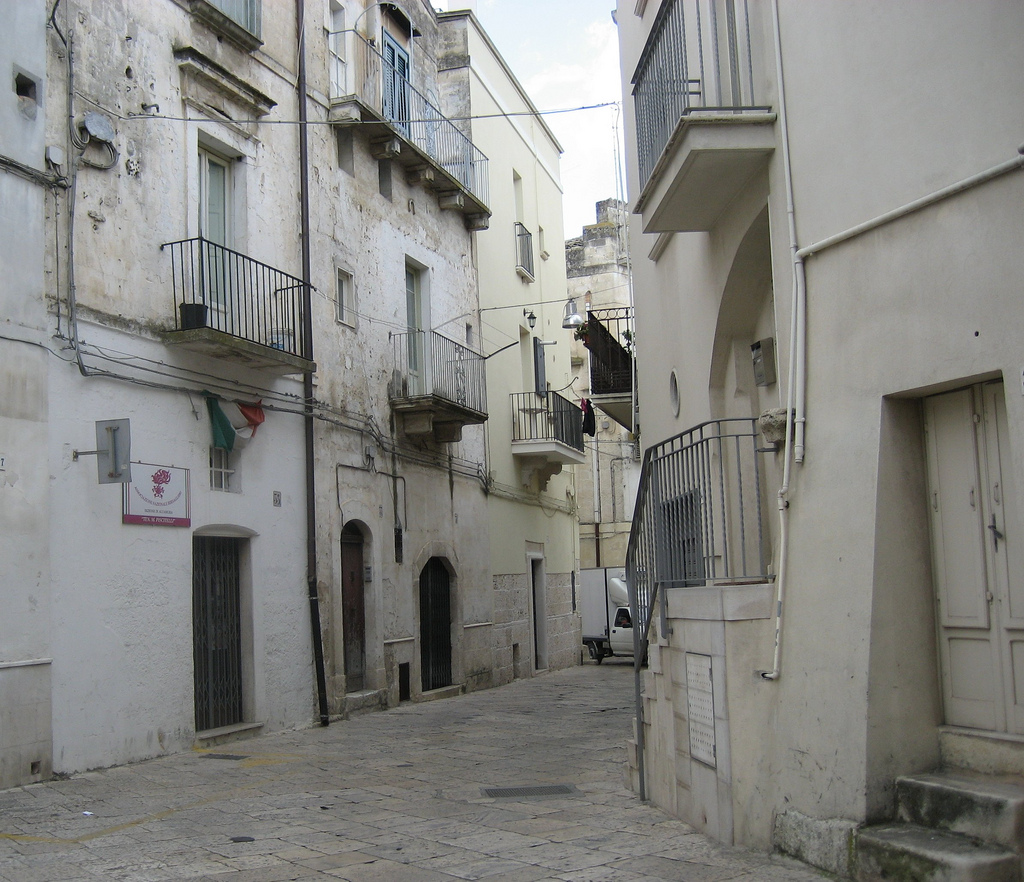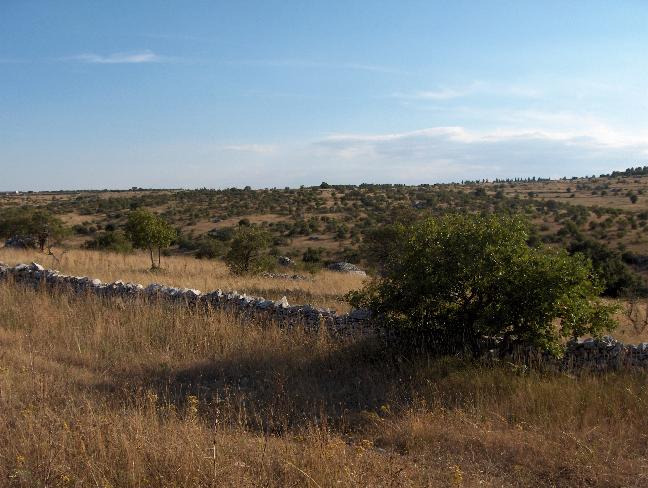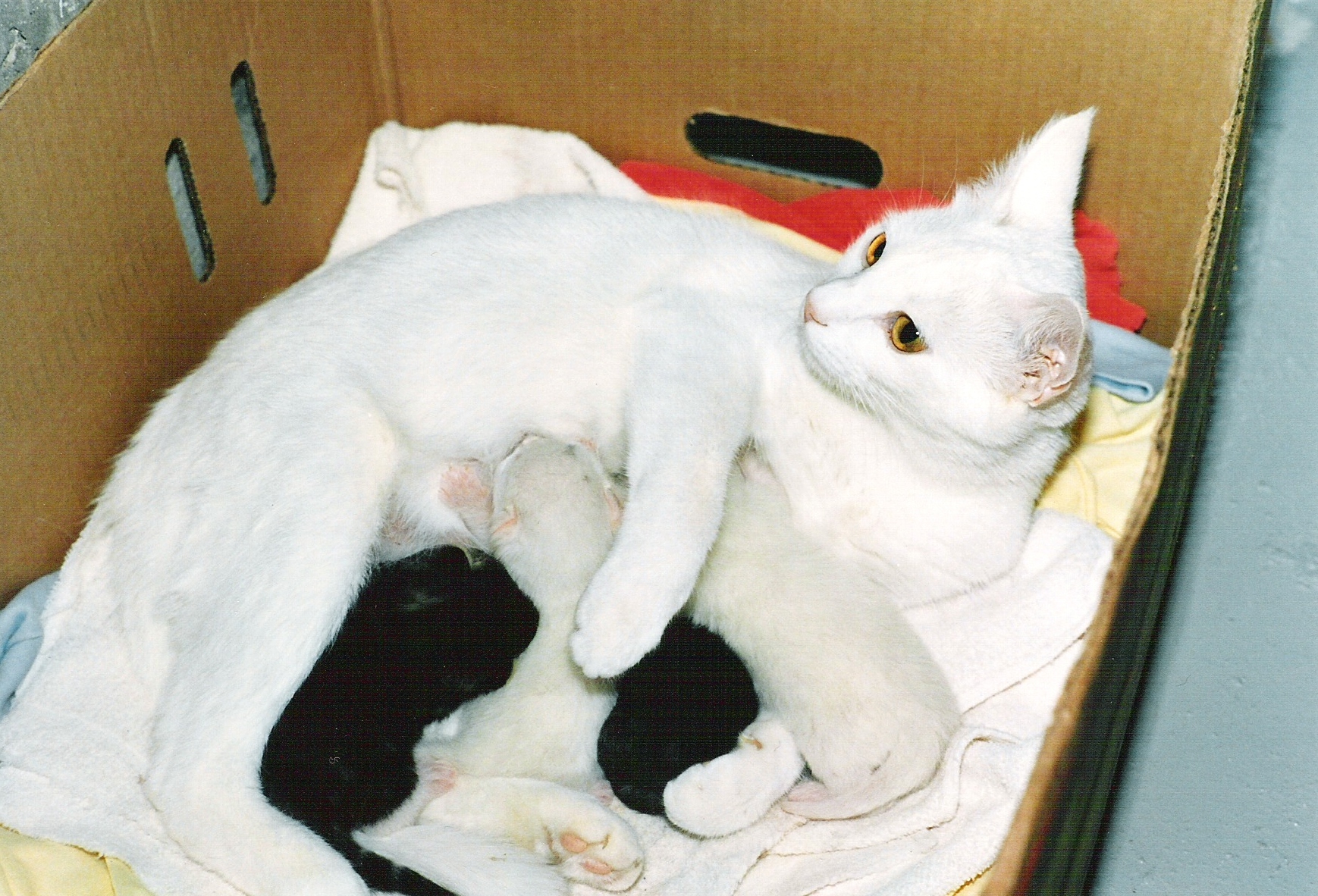|
Altamurana
The Altamurana is an Italian breed of sheep from the province of Bari, in Puglia in southern Italy. It is of Asiatic, possibly Syrian, origin. It is raised mainly in the provinces of Bari and Foggia, and takes its name from the town of Altamura, in the Murge. It was formerly considered a triple-purpose breed, yielding meat, milk, and wool; it is now kept principally for milk production. It yields approximately of milk per lactation, with an average of 7.5% fat and 6.5% protein. The Altamurana is one of the seventeen autochthonous Italian sheep breeds for which a genealogical herdbook is kept by the Associazione Nazionale della Pastorizia The Associazione Nazionale della Pastorizia, or roughly "national association of Sheep farming, pastoralists", is the Italian national body responsible for the administration of sheep- and goat-breeding. It maintains the herd books for more th ..., the Italian national association of sheep-breeders. In 1984, the breed population was ... [...More Info...] [...Related Items...] OR: [Wikipedia] [Google] [Baidu] |
Altamura
Altamura (; ; ) is a town and ''comune'' of Apulia, in southern Italy. It is located on one of the hills of the Altopiano delle Murge, Murge plateau in the Metropolitan City of Bari, southwest of Bari, close to the border with Basilicata. , its population amounts to 70,595 inhabitants. The city is known for its particular quality of bread called Pane di Altamura, which is sold in numerous other Italian cities. The 130,000-year-old calcified Altamura Man was discovered in 1993 in the nearby limestone cave called ''grotta di Lamalunga''. History The area of modern Altamura was densely inhabited in the Bronze Age (La Croce settlement and necropolis). The region contains some fifty Tumulus, tumuli. Between the 6th and the 3rd century BC a massive line of megalithic walls were erected, traces of which are still visible in some areas of the city. Ancient city The city was inhabited until around the tenth century AD. Then it was reportedly looted by Saracens. There are no reliab ... [...More Info...] [...Related Items...] OR: [Wikipedia] [Google] [Baidu] |
Associazione Nazionale Della Pastorizia
The Associazione Nazionale della Pastorizia, or roughly "national association of Sheep farming, pastoralists", is the Italian national body responsible for the administration of sheep- and goat-breeding. It maintains the herd books for more than a hundred indigenous breeds of Domestic sheep, sheep and Domestic goat, goats. It records breed numbers and submits them twice yearly to DAD-IS, and keeps records for all breeders of sheep and goats in the country. Breeds The association maintains genealogical herdbooks for seventeen principal List of sheep breeds, breeds of sheep, of which eight – the Altamurana, Comisana, Delle Langhe, Leccese, Massese (sheep), Massese, Pinzirita, Sarda (sheep), Sarda and Valle del Belice (sheep), Valle del Belice – are milk breeds, and nine – the Appenninica (sheep), Appenninica, Barbaresca, Bergamasca (sheep), Bergamasca, Biellese, Fabrianese, Gentile di Puglia, Laticauda (sheep), Laticauda, Merinizzata Italiana and Sopravissana - are meat ... [...More Info...] [...Related Items...] OR: [Wikipedia] [Google] [Baidu] |
Puglia
Apulia ( ), also known by its Italian language, Italian name Puglia (), is a Regions of Italy, region of Italy, located in the Southern Italy, southern peninsular section of the country, bordering the Adriatic Sea to the east, the Strait of Otranto and Ionian Sea to the southeast and the Gulf of Taranto to the south. The region comprises , and has 3,874,166 inhabitants as of 2025. It is bordered by the other Italian regions of Molise to the north, Campania to the west, and Basilicata to the southwest. The regional capital is Bari. In ancient times, more precisely at the beginning of the first millennium BC, the region of Apulia was inhabited by the Iapygians, while during the 8th century BC its coastal areas were populated by Magna Graecia, ancient Greeks. Later, the region was conquered by the ancient Romans. It was then conquered by the Byzantine Empire, Byzantines, followed by the Normans, the Kingdom of Aragon, Aragonese and the Spanish Empire, Spanish. Subsequently, it bec ... [...More Info...] [...Related Items...] OR: [Wikipedia] [Google] [Baidu] |
Basilicata
Basilicata (, ; ), also known by its ancient name Lucania (, , ), is an administrative region in Southern Italy, bordering on Campania to the west, Apulia to the north and east, and Calabria to the south. It has two coastlines: a 30-kilometre stretch on the Gulf of Policastro (Tyrrhenian Sea) between Campania and Calabria, and a longer coastline along the Gulf of Taranto (Ionian Sea) between Calabria and Apulia. The region can be thought of as "the arch" of "the boot" of Italy, with Calabria functioning as "the toe" and Apulia "the heel". The region covers about . In 2021, the population was slightly over 540,000. The regional capital is Potenza. The region comprises two provinces: Potenza and Matera. Its inhabitants are generally known as Lucanians (), and to a lesser extent as or by other very rare terms. In ancient times, part of its territory belonged to Magna Graecia, subject to coastal Greek colonies (including Sybaris). Later the region was conquered by the ... [...More Info...] [...Related Items...] OR: [Wikipedia] [Google] [Baidu] |
List Of Sheep Breeds
This is a list of breeds of domestic sheep. Domestic sheep (''Ovis aries'') are partially derived from mouflon (''Ovis gmelini'') stock, and have diverged sufficiently to be considered a different species. Some sheep breeds have a hair coat and are known as haired sheep. Domestic sheep breeds Sorted alphabetically. A B C D E F G H I J K L M N O P Q R S T U V W X Y Z Notes See also * List of cattle breeds * List of domestic pig breeds * List of goat breeds * Lists of domestic animal breeds References Sources * * * * * * * * * * * * * * * * * * * * * * * * * * * * * * * * * * * * * * * * * * * * * * * * * * * * * * * * * * * * * * * * * * * * * * * * * * * * * * * * * * * * * * * * * * * * * * * * * * * * * * * * * * * * * * * * * * * * * * * * * * * External links Breeds of Livestock - Sheep BreedsDepartment of Animal Science - Oklahoma State University {{Breed Sheep breeds, List of Lists of ... [...More Info...] [...Related Items...] OR: [Wikipedia] [Google] [Baidu] |
Sheep
Sheep (: sheep) or domestic sheep (''Ovis aries'') are a domesticated, ruminant mammal typically kept as livestock. Although the term ''sheep'' can apply to other species in the genus '' Ovis'', in everyday usage it almost always refers to domesticated sheep. Like all ruminants, sheep are members of the order Artiodactyla, the even-toed ungulates. Numbering a little over one billion, domestic sheep are also the most numerous species of sheep. An adult female is referred to as a ''ewe'' ( ), an intact male as a ''ram'', occasionally a ''tup'', a castrated male as a ''wether'', and a young sheep as a ''lamb''. Sheep are most likely descended from the wild mouflon of Europe and Asia, with Iran being a geographic envelope of the domestication center. One of the earliest animals to be domesticated for agricultural purposes, sheep are raised for fleeces, meat ( lamb, hogget or mutton), and milk. A sheep's wool is the most widely used animal fiber, and is usually harvested by ... [...More Info...] [...Related Items...] OR: [Wikipedia] [Google] [Baidu] |
Province Of Bari
The province of Bari (; ; ) was a province in the Apulia region of Italy. Its capital was the city of Bari. It has an area of , and a total population of 1,594,109 (2005). On 1 January 2015 it was replaced by the Metropolitan City of Bari. List of ''comuni'' * Acquaviva delle Fonti * Adelfia * Alberobello * Altamura * Bari * Binetto * Bitetto * Bitonto * Bitritto * Capurso * Casamassima * Cassano delle Murge * Castellana Grotte * Cellamare * Conversano * Corato * Gioia del Colle * Giovinazzo * Gravina in Puglia * Grumo Appula * Locorotondo * Modugno * Mola di Bari * Molfetta * Monopoli * Noci * Noicattaro * Palo del Colle * Poggiorsini * Polignano a Mare * Putignano * Rutigliano * Ruvo di Puglia * Sammichele di Bari * Sannicandro di Bari * Santeramo in Colle * Terlizzi * Toritto * Triggiano * Turi * Valenzano * Andria (to Barletta-Andria-Trani in 2009) * Barletta (to Barletta-Andria-Trani in 2009) * Bisceglie (to Barletta-Andria-Trani in 2009) * ... [...More Info...] [...Related Items...] OR: [Wikipedia] [Google] [Baidu] |
Italian Provinces
The provinces of Italy ( ; sing. ) are the second-level administrative divisions of the Italian Republic, on an intermediate level between a municipality () and a region (). Since 2015, provinces have been classified as "institutional bodies of second level". There are currently 107 institutional bodies of second level in Italy, including 80 ordinary provinces, 2 autonomous provinces, 4 regional decentralization entities, 6 free municipal consortia, and 14 metropolitan cities, as well as the Aosta Valley region (which also exercises the powers of a province). Italian provinces (with the exception of the current Sardinian provinces) correspond to the NUTS 3 regions. Overview A province of the Italian Republic is composed of many municipalities (). Usually several provinces together form a region; the region of Aosta Valley is the sole exception—it is not subdivided into provinces, and provincial functions are exercised by the region. The three main functions devolve ... [...More Info...] [...Related Items...] OR: [Wikipedia] [Google] [Baidu] |
Province Of Foggia
The province of Foggia (, ; Neapolitan language, Foggiano: ) is a Provinces of Italy, province in the Regions of Italy, Italian region Apulia. This province is also known as Daunia, after the Daunians, an Iapygians, Iapygian pre-Roman tribe living in Tavoliere delle Puglie, Tavoliere plain, and as Capitanata, derived from ''Catapanata'', since the area was governed by a Katepano, catepan as part of the Catepanate of Italy during the High Middle Ages. Its capital is the city of Foggia. History Geography The province of Foggia can be divided in three parts: one centered on its capital called ''Tavoliere delle Puglie, Tavoliere'', another along the Apennines named ''Daunian Mountains'' and the third on the spur of the boot-shaped Italian peninsula called ''Gargano''. The ''Tavoliere'' is an important agricultural area: grapefruit, olives, Durum, durum wheat and tomato are the chief products. It is called "the granary of Italy" because of its significant wheat production. ''Dauni ... [...More Info...] [...Related Items...] OR: [Wikipedia] [Google] [Baidu] |
Murge
The Altopiano delle Murge (Italian for 'plateau of the Murge') is a karst topographic plateau of rectangular shape in southern Italy. Most of it lies within Puglia and corresponds with the sub-region known as Murgia or Le Murge. The plateau lies mainly in the Metropolitan City of Bari and the province of Barletta-Andria-Trani, but extends into the provinces of Brindisi and Taranto to the south, and into Matera in Basilicata to the west. The name is believed to originate from the , meaning 'sharp stone'. Geography and geology The Murge plateau covers a surface of some 4,000 km², bordered by the Ofanto river and the Tavoliere delle Puglie to the north, the Adriatic Sea to the northeast, and by the Messapic depression, which separates it from the Salento peninsula, to the south. It is usually divided into Alta Murgia (High Murgia), the highest area, with poorer vegetation, and Bassa Murgia (Lower Murgia), with more fertile land, extensively planted with olive-trees for th ... [...More Info...] [...Related Items...] OR: [Wikipedia] [Google] [Baidu] |
Sheep's Milk
Sheep milk is the milk of Sheep, domestic sheep. It is commonly used to make cultured Dairy product, dairy products, such as cheese. Some of the most popular sheep cheeses include feta (Greece), pecorino romano (Italy), Roquefort (France) and Manchego (Spain). Sheep breeds Specialized dairy breeds of sheep yield more milk than other breeds. Common dairy breeds include: * East Friesian sheep, East Friesian (Germany) * Sarda sheep, Sarda (Italy) * Lacaune (sheep), Lacaune (France) * British Milk (sheep), British Milk Sheep (UK) * Chios sheep, Chios (Greece) * Awassi sheep, Awassi (Syria) * Assaf sheep, Assaf (Israel) * Zwartbles sheep, Zwartbles (Friesland, Netherlands) In the U.S., the most common dairy breeds are the East Friesian and the Lacaune. Meat or wool breeds do not produce as much milk as dairy breeds, but may produce enough for small amounts of cheese and other products. Milk production period Female sheep (ewes) do not produce milk constantly. Instead, they produ ... [...More Info...] [...Related Items...] OR: [Wikipedia] [Google] [Baidu] |
Lactation
Lactation describes the secretion of milk from the mammary glands and the period of time that a mother lactates to feed her young. The process naturally occurs with all sexually mature female mammals, although it may predate mammals. The process of feeding milk in all female creatures is called ''nursing'', and in humans it is also called ''breastfeeding''. Newborn infants often produce some milk from their own breast tissue, known colloquially as witch's milk. In most species, lactation is a sign that the female has been pregnant at some point in her life, although in humans and goats, it can happen without pregnancy. Nearly every species of mammal has teats; except for monotremes, egg-laying mammals, which instead release milk through ducts in the abdomen. In only a handful of species of mammals, certain bat species, is milk production a normal Male lactation, male function. ''Galactopoiesis'' is the maintenance of milk production. This stage requires prolactin. Oxytocin is cr ... [...More Info...] [...Related Items...] OR: [Wikipedia] [Google] [Baidu] |







